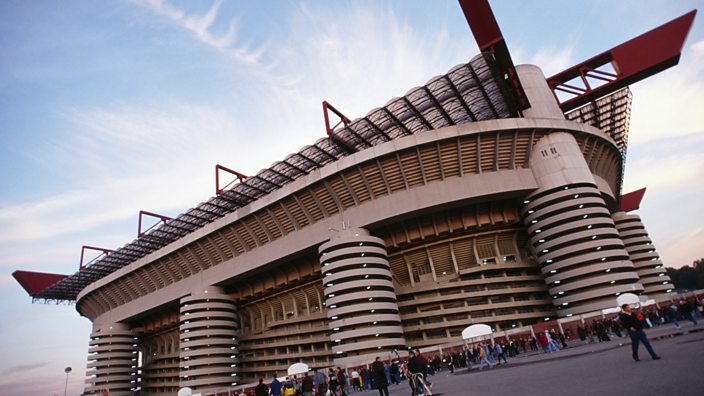 Gettyimages
GettyimagesIs getting a shiny new stadium always a good thing?
Sometimes, a new stadium's great. Other times, all the craft ales in the world still can't help create what you might call 'atmosphere'
The Giuseppe Meazza Stadium aka the San Siro - one of the most iconic stadiums in world football - is set to be demolished and rebuilt.
'La Scala of football', as it's known to the Milanese, (after the opera house in the same city), has been the home of AC Milan since 1926 and in 1947 also became the home of their rivals Inter Milan. It was originally based on a British style of stadium, with four stands holding around 35,000 people.
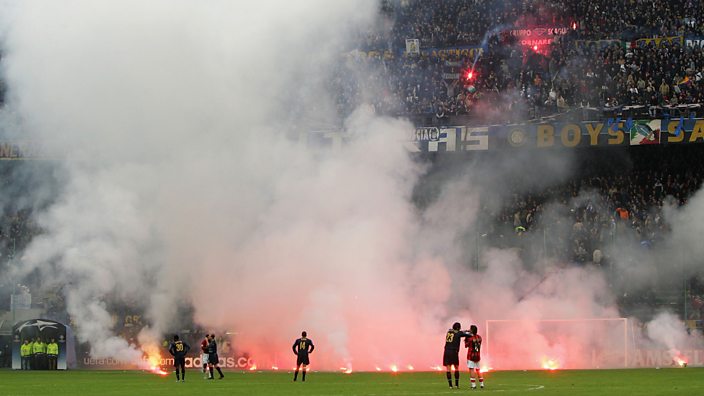 Gettyimages
GettyimagesOver the years, it's had a few updates, with the current capacity just above 80,000. In 1980, it was named after Italian legend Giuseppe Meazza, who played for both AC Milan and Inter.
Ahead of the 1990 World Cup, the stadium got the big facelift to become the iconic structure we recognise today - a roof was added and 11 towers were built on the exterior. The effect is one of the most striking and idiosyncratic structures in football - like a big, modernist power station from the future but also the past.
It's been home to players like Paolo Maldini, Kaka, Brazil's Ronaldo and Zlatan Ibrahimovic (Ronaldo and Zlatan actually played for both sides). It's the stadium where Kaka took the Rossoneri to a 3-0 win over Manchester United in the 2007 Champions League semi-final. Where Arsene Wenger's Arsenal stunned Inter 5-1. Where a Gareth Bale hat-trick almost helped a 10-man Tottenham overturn a 4-0 deficit against Inter Milan in the 2010 Champions League. It's also the place where Frank Rijkaard spat in Rudi Voller's mullet during Italia '90.
There have been talks of refurbishment for some time, but, last week, AC Milan President Paolo Scaroni claimed that the decision had been taken to build a new stadium instead.
End of an era.
Milan has been chosen to host the 2026 Winter Olympics, so could a new stadium be the venue for the opening ceremony?
Elsewhere in Europe, there are plans to upgrade a few more big footballing temples.
Real Madrid President Florentino Perez has revealed plans this year to make the Bernabeu the 'best stadium in the world', with a 360-degree video scoreboard and a surround 'skin' that allows images to be projected onto the exterior.
There are also plans to modernise Barcelona's Camp Nou and make it bigger in the process too.
A brand, spanking new stadium can be exciting for fans, but there will always be the traditionalists who hanker for their old haunt. Sometimes, a new stadium can give a boost to a club. But sometimes, for some fans at least, something added can also mean some things get lost.
Take a look at these iconic stadiums, before and after rebuild.
Wembley Stadium, London
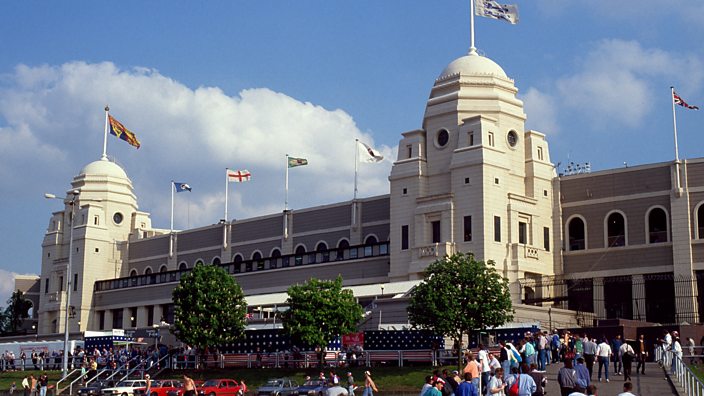 Gettyimages
GettyimagesThe original Wembley Stadium was opened in 1923 and hosted five European Cup finals, the final of Euro '96 (which, sadly, England just missed out on) and, perhaps most famously, the 1966 World Cup final, where Bobby Moore lifted the trophy for England.
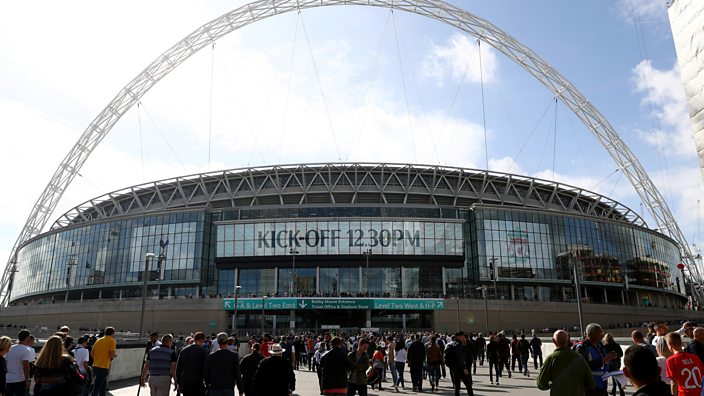 Gettyimages
GettyimagesWith the new Wembley Stadium opening on the same site as the original in 2007, the famous twin towers were gone and the now-famous arch erected in their place.
It looks out of this world. Unfortunately, for some at least, it also arguably has the atmosphere of an extraterrestrial stadium.
In 2015 Will Magee of VICE called it 'possibly the worst venue in the world'. Could that be down to the design and the steep slopes on the lower tier, which is said to make fans feel far from the action?
Henry Winter previously said the "rake" [slope of the lower stand] is one reason but also that it's partly attributable to England fans, some of whom may be "day-trippers".
However, it's not all bad. When Tottenham had to temporarily move in, Harry Kane claimed the atmosphere at the new Wembley was even better than at White Hart Lane.
Estadio Da Luz, Lisbon
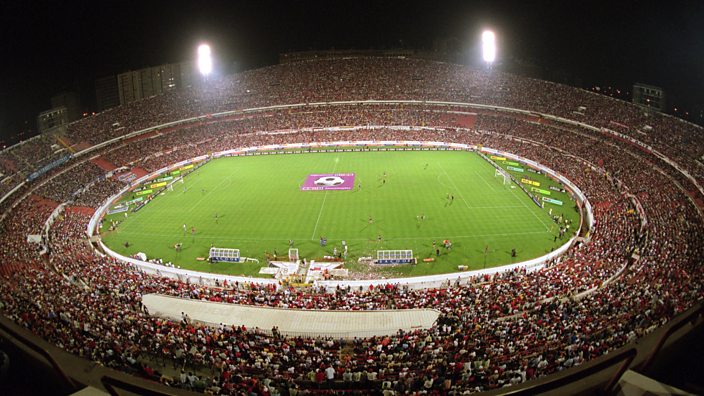 Gettyimages
GettyimagesThe original Estadio da Luz, or, 'Stadium of Light' (no, not that one), was home to Benfica. When it first opened its doors in 1954, 50,000 fans could watch games there and by 1985 and a third tier added, the capacity reached 120,000 which was reported to be the largest stadium in Europe at the time.
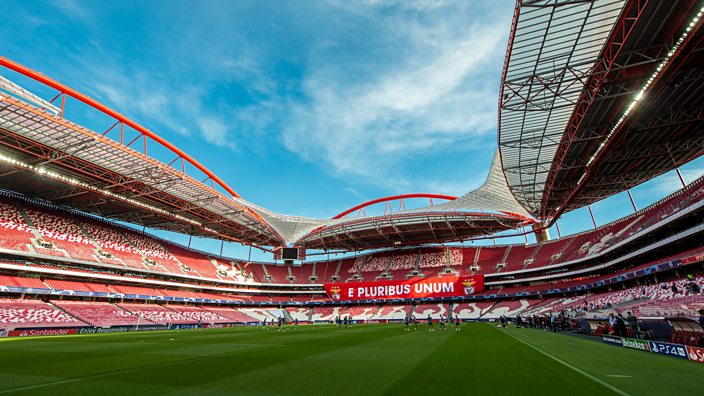 Gettyimages
GettyimagesThe 'new' stadium (it opened in 2003) is officially called Estádio do Sport Lisboa e Benfica, but everyone still calls it the Estadio Da Luz, or, sometimes, 'the Cathedral'. It hosted the 2004 European Championship Final, where underdogs Greece won and also the 2014 Champions League Final, where Real Madrid beat Atletico Madrid, seeing Cristiano Ronaldo lift the trophy in his home country in the process.
This one's probably one of the success stories. Kate Rowan chose this as her favourite new stadium in a piece for The Telegraph in 2017. Inside the stadium, Benfica fans still bring a lot of noise while outside there are nods to Benfica's heritage - like the statue of their legendary striker Eusebio.
White Hart Lane/Tottenham Hotspur Stadium, London
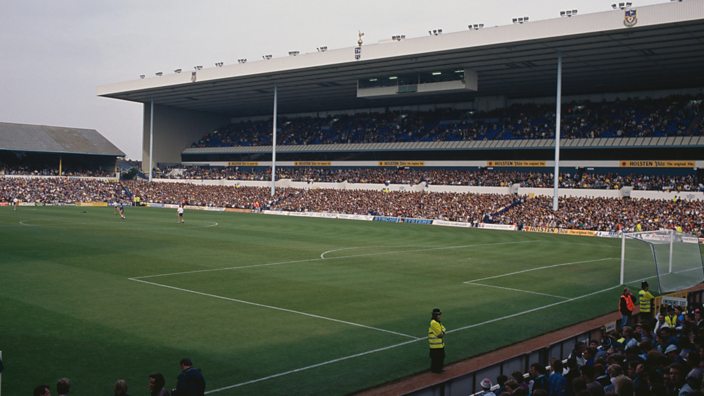 Gettyimages
GettyimagesWhite Hart Lane was home to Tottenham Hotspur from 1899 until 2017 and had a traditional structure which made fans feel they were right on top of the pitch. It was home to big players like Jimmy Greaves, Glenn Hoddle, Jurgen Klinsmann, David Ginola, Gareth Bale and, of course, more recently, Harry Kane.
Known to fans as The Lane, the final game to be played there was a 2-1 win over Manchester United.
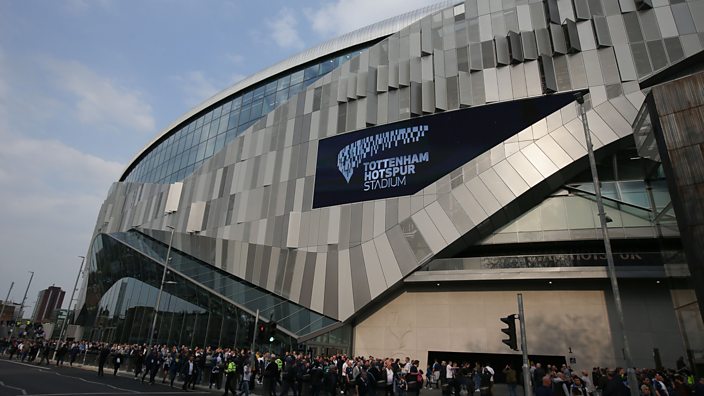 Gettyimages
GettyimagesAfter a lengthy wait, Spurs' very shiny new stadium finally opened in April this year. The £1bn construction has a capacity of 62,062, (White Hart Lane held just over 36,000), making it the biggest club stadium in London. It also boasts the longest bar in Europe (65 metres) and according to Tottenham's official site, is the first stadium to have its own microbrewery.
There are 65 food and drink outlets and the stadium is cashless. For a long time, there was a fair bit of talk about a cheese delicatessen on site, which could have served as a metaphor for the death of 'proper football' (a la "prawn sandwich brigade").
Alas the gourmet cheeses didn't transpire in the end but the designers did spend their time considering how to maintain a strong atmosphere in a new build.
Christopher Lee, who designed the stadium, has explained they made sure front-row fans would be no more than eight metres from the touchline, so the crowd can still feel 'on top' of the pitch. Meanwhile, the South Stand was based on Borussia Dortmund's Yellow Wall, which is seen as one of the reasons the german team have such a great atmosphere.
"What we were really interested in was creating this giant megaphone that drives noise and songs and chanting," says Lee.
Rowan Moore, of the Guardian, says the stadium avoids, just, feeling like a shopping mall and achieves, "the desired combination of magnificence and intimacy".
Peter Haine, secretary of the Tottenham Hotspur Supporters’ Trust, said, "All the fans are so very close to the pitch that it seems like the old stadium".
Maine Road/Etihad Stadium, Manchester
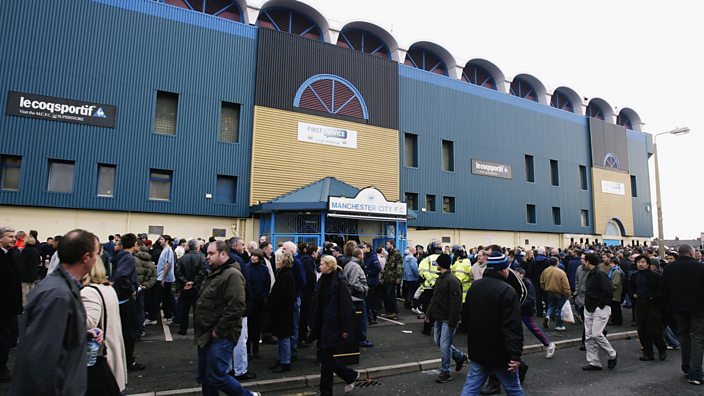 Gettyimages
GettyimagesMaine Road, in the heart of Moss Side, Manchester, was home to the blue half of Manchester for 80 years. From 1923 to 2003 it was the stomping ground of a fan base who had a reputation for being loyal, local and passionate. It had seen the club through the first, second and third divisions of English football and, in fact, after spending the previous six seasons yo-yo'ing through the leagues, their final season at Maine Road (2002-03) saw the team finish ninth in the Premiership table - the division they've remained in ever since.
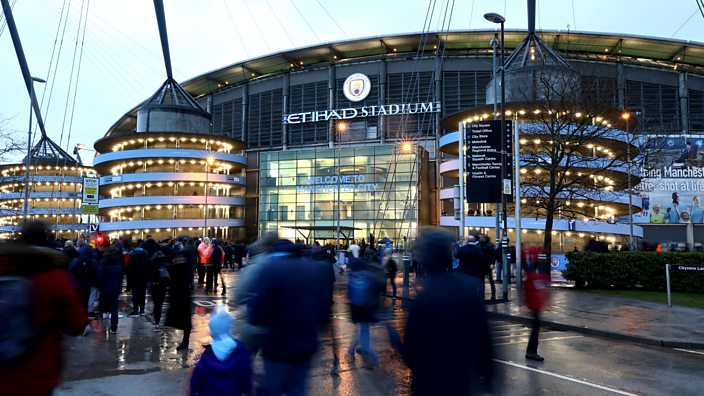 Gettyimages
GettyimagesThe Etihad Stadium, as it's been known since 2011 (following a sponsorship deal), is a fully modern facility. In their first season at their new home (2003-04), City finished 16th. Since then, there's been quite an upturn in fortunes, including four Premier League titles and the first ever domestic English treble.
It is, however, sometimes subject to scathing criticism about atmosphere (granted, that's probably mostly by fans of rival clubs) and has earned the unfortunate nickname in some quarters, 'The Emptyhad'.
Upton Park/Olympic Stadium, London
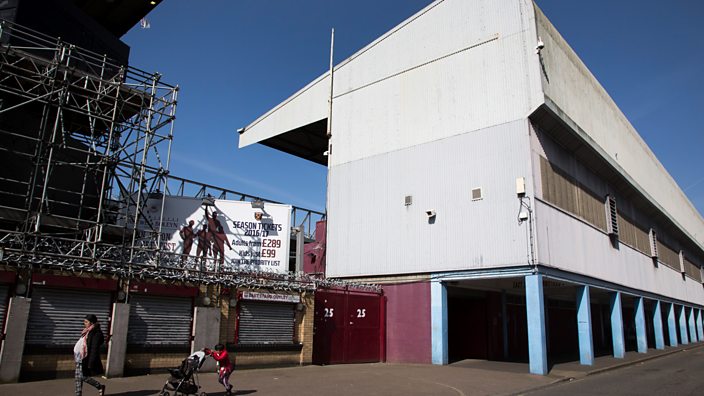 Gettyimages
GettyimagesThe Boleyn Ground, or Upton Park, was home to West Ham from 1904 until 2016. It was a traditional old English stadium, couched right in the heart of the East London community, where famous Hammers players like Bobby Moore, Geoff Hurst and Trevor Brooking plied their trade.
It was the setting of Paolo Di Canio's sublime strike against Wimbledon in 2000.
And like their cross-town rivals Tottenham, their last home match saw them defeat Manchester United.
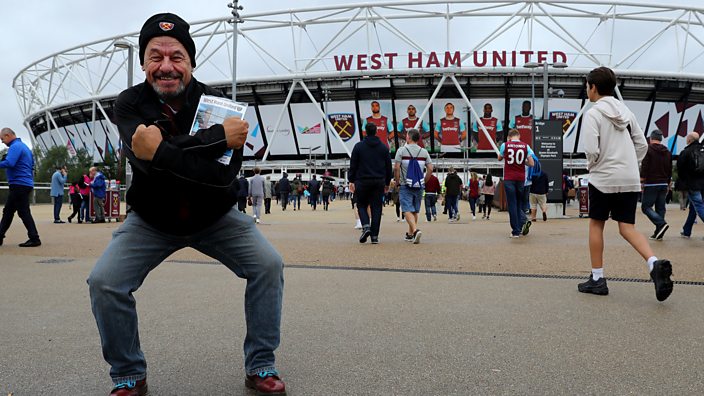 Gettyimages
GettyimagesThe move to the London Olympic Stadium in Stratford has not been without its problems though. Fans have complained about everything from toilet and tea facilities to the running track around the pitch meaning crowds are too far from the action. In 2018, during a 3-0 home loss to Burnley, some fans invaded the pitch in protest and 'Mr West Ham' Mark Noble wrote an open letter urging supporters to pull together.
Former manager Slaven Bilic was very scathing after West Ham lost 2-1 to Manchester United in April.
"Players hated to come to Upton Park, especially foreign players, they did not like it, because it has a small dressing room, it’s not very nice and there’s the crowd, the pitch looks small, every throw-in is a danger for you," he said, adding, "Olympic Stadium is [a] brilliant stadium make no mistake, it is brilliant for the fans, the families, but it will never have that football feeling."
The lure of a modern facility set nearby a big shopping centre doesn't appear to have universally won over fans.
Highbury/Emirates Stadium, London
 Gettimages
GettimagesArsenal Stadium, known to most by its original name, Highbury, was home to the Gunners from 1913 until 2006. The site has since been turned into a residential area.
The old stadium was designed in 1913 by Archibald Leitch, who had also designed stands for other big clubs like Liverpool, Glasgow Rangers, Manchester United, Everton, Chelsea and Tottenham. Big CV.
It was the setting of Arsene Wenger's revolution in English football during the nineties and early noughties.
 Gettyimages
GettyimagesConstruction on the £390m Emirates Stadium, Arsenal's new home, began in 2004, when Arsene Wenger won the last of his three Premier League trophies. That was the culmination of Wenger's project that saw Arsenal's 'Invincibles' make history by winning the Premier League without suffering a single defeat during the campaign.
The first Premier League game to be played at the Emirates took place in 2006. Since then, though fairly consistently making Champions League football and winning more domestic trophies, Arsenal haven't been able to replicate the success on the pitch of the pre-Emirates Wenger era.
At different times, there has been criticism of the atmosphere at the Emirates. In 2013, after a survey of 17,000 fans, less than six percent said they regarded the atmosphere in terms of volume and support for the team as 'good'. Damning.
So the moral of the story? Be careful what you wish for. Except for when it actually works.
MORE LIKE THIS

















